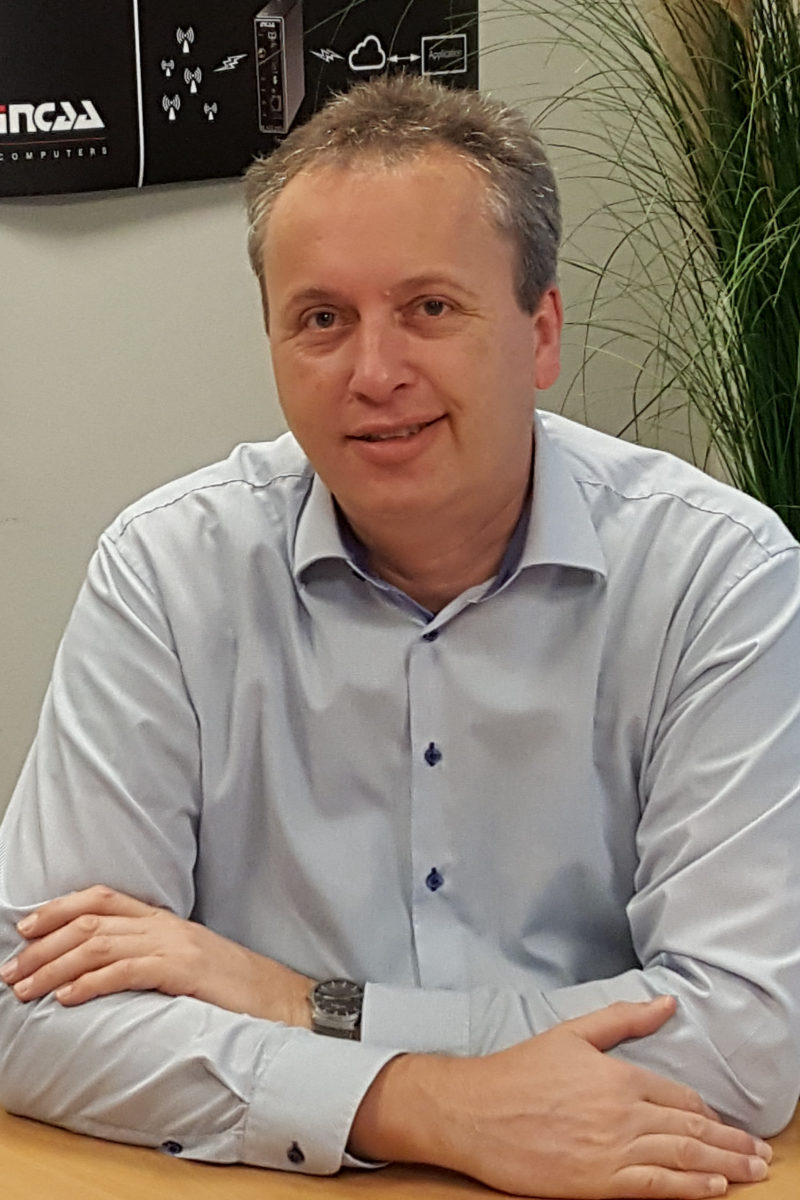
Incaa Computers
Science and industry as customers
Traditional screening for breast cancer is notoriously painful. Thanks partly to the work of Incaa Computers, testing can now be done differently, by exposing the breast to a pulsed laser. The light penetrates the breast and activates haemoglobin, which leads to a minimum increase in pressure by so-called thermoelastic expansion of the blood vessels. This built-up pressure is released by simultaneously emitting brief ultrasonic sound waves. By measuring these sound waves, a 3D image of the veins in the breast can be created; this makes it possible to identify irregularities, because cancerous cells have more veins. Incaa’s role is to measure and strengthen these signals and ensure that they are stored in a server. This is just one example of the work that Incaa Computers does.
Incaa was launched in 1975. The company has a 20-strong workforce and an annual turnover of two to three million euros. Incaa’s customers are mainly in industry and science. It was originally involved in microprocessor systems, but mass production is necessary to be successful in that market and it was predominantly the big players, like Motorola, which could compete. Being a small company, Incaa pulled out. Now, it successfully specializes in measure- and control modules. Customers include companies such as ASML and Saab Technologies and, in the field of science, CERN; Incaa supplies products that are used with the particle accelerators. In addition to word-of-mouth advertising, it is the contacts made at Big Science conferences that provide new customers. Most of Incaa’s production is for the Dutch market, but the company also supplies to the United States and Europe. Incaa does not have the ambition to export very much more; the company concentrates on projects that result in products. The overheads for carrying out projects are lower in the Netherlands than abroad.
CERN is one of its most prestigious export successes. This scientific organization became a client thanks to a Big Science conference in the 1970s; CERN chose Incaa because it was producing a very compact computer, which was in demand. Incaa is also involved in predictive maintenance of railway systems. One product that can be used worldwide measures the temperature of railway points with the aid of sensors. The signals emitted are processed via LoRa, allowing maintenance to be carried out on time, before a system malfunctions.
Export countries: Germany, Spain, Italy, Sweden, Switzerland, United Kingdom, USA

Incaa Computers
Science and industry as customers
Traditional screening for breast cancer is notoriously painful. Thanks partly to the work of Incaa Computers, testing can now be done differently, by exposing the breast to a pulsed laser. The light penetrates the breast and activates haemoglobin, which leads to a minimum increase in pressure by so-called thermoelastic expansion of the blood vessels. This built-up pressure is released by simultaneously emitting brief ultrasonic sound waves. By measuring these sound waves, a 3D image of the veins in the breast can be created; this makes it possible to identify irregularities, because cancerous cells have more veins. Incaa’s role is to measure and strengthen these signals and ensure that they are stored in a server. This is just one example of the work that Incaa Computers does.
Incaa was launched in 1975. The company has a 20-strong workforce and an annual turnover of two to three million euros. Incaa’s customers are mainly in industry and science. It was originally involved in microprocessor systems, but mass production is necessary to be successful in that market and it was predominantly the big players, like Motorola, which could compete. Being a small company, Incaa pulled out. Now, it successfully specializes in measure- and control modules. Customers include companies such as ASML and Saab Technologies and, in the field of science, CERN; Incaa supplies products that are used with the particle accelerators. In addition to word-of-mouth advertising, it is the contacts made at Big Science conferences that provide new customers. Most of Incaa’s production is for the Dutch market, but the company also supplies to the United States and Europe. Incaa does not have the ambition to export very much more; the company concentrates on projects that result in products. The overheads for carrying out projects are lower in the Netherlands than abroad.
CERN is one of its most prestigious export successes. This scientific organization became a client thanks to a Big Science conference in the 1970s; CERN chose Incaa because it was producing a very compact computer, which was in demand. Incaa is also involved in predictive maintenance of railway systems. One product that can be used worldwide measures the temperature of railway points with the aid of sensors. The signals emitted are processed via LoRa, allowing maintenance to be carried out on time, before a system malfunctions.
Export countries: Germany, Spain, Italy, Sweden, Switzerland, United Kingdom, USA
